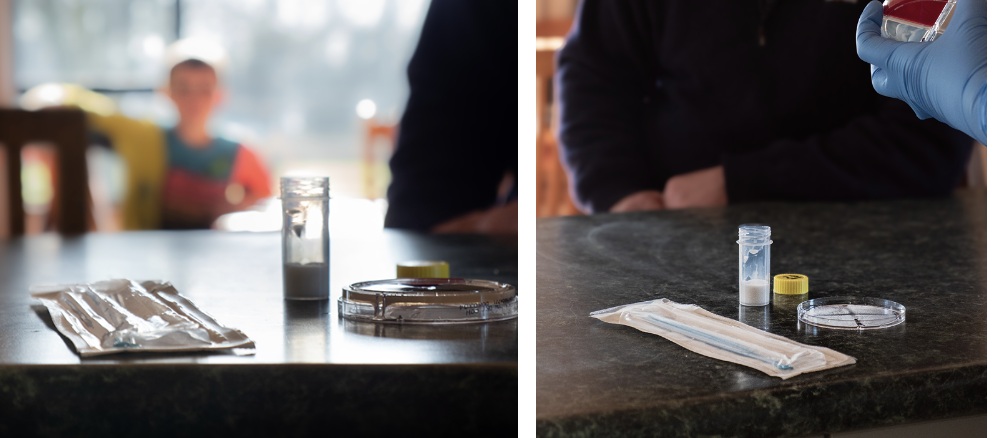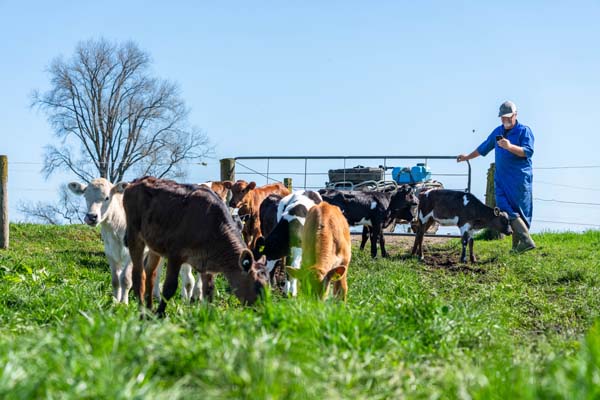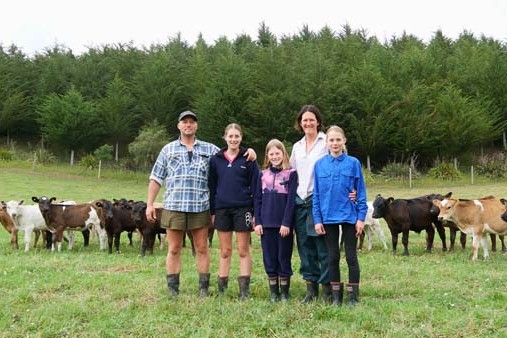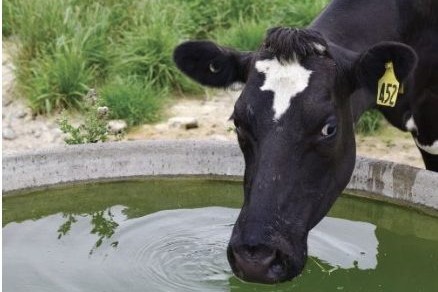Mastering mastitis
A disastrous season for somatic cell count prompted a full rethink of processes for a North Canterbury couple. They’re now consistently winning awards for milk quality and averaging close to 50,000 cells/ml somatic cell count (SCC) for the past five years. Words Anne Lee, Photos Holly Lee.

Spring mastitis isn’t a factor any more for Culverden sharemilkers Aaron and Holly Jackson. Their mastitis antibiotic spend per cow is just over a dollar and their dry cow expenditure less than 50 cents per cow.
It’s a far cry from the money they were handing over six years ago, when they were battling multiple, repeated cases of mastitis.
It was just their second season as sharemilkers on the 380-cow farm and the couple recall the misery of stripping cows through spring and on into the season, constantly having spikes in their bulk tank somatic cell count (BSCC) and the frustration of treating and re-treating cows.
“We were all stressed,” Aaron says. “We were stressed, our staff were stressed, our cows were stressed. We had a family holiday booked to the North Island and in the end, Holly left on her own with two young children and heavily pregnant, while I stayed behind trying to get the cell count down so I could come away even for a day.
“We had high debt. We had gone sharemilking the previous season with 400 cows but we hadn’t been able to afford all of them so our farm owner bought 100 for us. We took 44% of the milk cheque and his share was 56%.”
“We were stressed, our staff were stressed, our cows were stressed.” – Aaron Jackson, North Canterbury
“We felt like we were letting our farm owner down,” Holly recalls. “We were wasting money – it was just terrible.”
While they’d had a great first season, they started the second season with a BSCC of 184,000 cells/ml and it just kept on climbing heading into Christmas, despite everything they tried.
In an effort to find out what was going on with the herd, they carried out a bulk milk test snapshot with the help of Farm Medix.
That test revealed they had Staphylococcus aureus and concerning levels of coagulase-negative staphylococcus (CoNS) bacteria present along with other pathogens that were of lower risk.
Their farm practices were inspected and reviewed with a report then noting where the common sources of the bacteria could be coming from and what farm practices could be addressed.
They made some changes, isolating their clinical Staph. aureus cows and milking them last, but it was when they carried out a one-off, full Herd Screen in May, that they had detailed information on every cow.
That Herd Screen meant collecting milk from all four quarters to create a sample for each cow that was then analysed by the Farm Medix microbiologists.
Subclinical Staph. aureus cows were identified along with cows infected with other pathogens.
“We learned so much from that process and really built our understanding of the pathogens, where they come from and what the treatment is,” Holly says.
The only pathogen that gets treated with antibiotics is Streptococcus uberis because it’s the only bacteria identified in their cows which responds to them, she says.
“We culled all of the Staph. aureus cows, which was 34 out of our 400, because we knew there was little hope of getting a cure on them and we wanted to start afresh,” Aaron says.
The testing identified a significant antibiotic resistance problem in the herd but Aaron says he was under pressure from his vet to go with blanket dry cow therapy after such a bad season.
“Knowing what I do now, I would have the confidence not to do that, but at that point I just wanted to throw everything at it,” he says.
The next season, new procedures were put in place and the seasonal average BSCC levels dropped from 230,000 to 90,000c/ml, dropping further to just 43,000c/ml last season.
One of the major differences has been the ability to take milk samples by quarter and inoculate specialist agar plates, incubate the plates to grow the pathogens and then use the skills of microbiologists via WhatsApp to identify what those pathogens are.
It has enabled targeted treatment at a quarter level when it’s needed and advice on where to look if environmental factors are likely behind a rise in pathogen numbers and subclinical or clinical infections.
Dry-off
Aaron and Holly told their story and explained their protocols at this year’s South Island Dairy Event (SIDE).
Holly explains that the new procedures for dry-off are followed closely by the team with everyone quickly growing in confidence as their understanding of the cause and effect built up.
The Rapid Mastitis Test (RMT) paddle has become a key tool to identify infected quarters.
“We RMT everything during the week we’re drying off so we can plate the identified quarters,” Aaron says. “Only Strep. uberis is treated with dry cow therapy at dry-off. Staph cows are culled.”
They had been doing the traditional Smart SAMM (Seasonal Approach to Managing Mastitis) plan process – any first lactation cow with an SCC under 120,000c/ml and any mixed-age cow under 150,000c/ml received teat seal only. The problem was that the herd test data gave an average of all four quarters and could mask an issue with a specific quarter.
“The RMT paddle gets people thinking at a quarter level, not an udder level, and that’s what our aim is,” Holly says.
“Only Strep. uberis is treated with dry cow therapy at dry-off. Staph cows are culled.” – Aaron Jackson, North Canterbury
Care has to be taken in reading the RMT paddle results, she explains. You need to be looking at whether milk for each quarter is more concentrated because she’s drying off and the milk volume is down.
“You want to see a good reaction and that milk go slimy and clumpy when the reagent is added,” she says.
All cows and heifers are teat sealed for winter.
Winter
Cows are wintered on crop and all efforts are made to avoid mud. The past two seasons Aaron and Holly have instigated an ‘on the drop mob’ – moving springers from the restricted group, where they’re receiving 90% of their maintenance requirement, to a group where they’re treated like royalty, Aaron says.
“It’s cows that are bagging up, that we know, based on calving dates, are within two or three days of calving. We’re ad-lib feeding them on a dusted (magnesium oxide) break of grass and making sure they have ad-lib silage. We’re making sure they’re in a positive energy balance.
“It seems to work. They’re back eating quickly after calving and in better condition to fight infections and we’re not having problems with down cows,” he says.
Hygiene Consistency is the key, says Holly.
“We were wearing gloves for milking but maybe not all the time. It wasn’t that we were unhygienic, I just think we weren’t consistent and you have to be.
“We are germ carriers. There has to be no skin-to-skin contact so no calves suckle on our hands, no milking without gloves – everything is done with gloves and sleeves – even when it’s hot.
“We were teat spraying but we looked at that more closely and slowed it down. We made sure everyone really understood how important good technique is and that getting full coverage is critical. It kills the pathogens and it helps with teat condition so they don’t get cracked and create more entry points for bacteria to get into the teat canal.”
Human body fluids from sneezing and coughing can spread pathogens to cows too. Staph. aureus can be found in the human nose and it doesn’t take much for poor hygiene practices to spread it.
Tails must be kept trimmed and clean.
“We were trimming them but we were waiting until they were dirty and needed it. But it’s too late then,” Holly says.
“We needed to be proactive, so we trim tails before the first milking, before mating and again in February before the flies show up, and again before dry-off,” Aaron says.
Calving
The ‘calved cow procedure’ is closely followed by the whole team. On day one when the calved cow comes into the dairy for the first time:
- Udder is sprayed with teat spray.
- Tail is trimmed.
- Teats are teat sprayed again.
- Each teat is thoroughly cleaned, with separate alcohol wipes used for each quarter similar to teat sealing standards.
- Teat sprayed again because the emollient in the spray will help protect teat skin after the alcohol wipe.
- Each quarter is stripped to get rid of any teat seal and checked for signs of clinical mastitis.
- Cow is milked out.
- Teat spray.
- Cow is marked appropriately.
- Aaron says this whole process adds about two minutes to the first milking and can be the most valuable single step in setting the cow up for good udder health through the spring and beyond.
“We invest the time on that first day to save a lot of time down the track,” Holly says.
On day four, at the eighth milking, every cow is RMT’d and must have a clear test before she moves to the milking herd from the colostrum group.
“If she has a quarter react, we will take a sample and find out what bacteria is causing the infection,” explains Holly. “If milk from all four quarters gives a gluggy result or thickens and she’s an older cow or has had a hard calving, we will leave her for another day and retest her. You have to look at her holistically.”
“The RMT paddle gets people thinking at a quarter level, not an udder level, and that’s what our aim is.” – Holly Jackson, North Canterbury
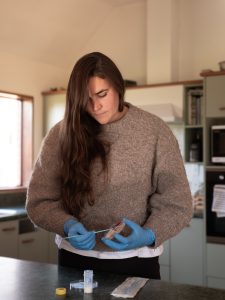 Mating
Mating
During the season and at mating the team is on the lookout for indicators of mastitis and animal health issues.
“It might be a cow kicking at milking or she might not milk out properly or her milk might drop,” Holly says. “Everyone is very good at picking up mastitis now.”
The couple herd test four times a year as part of their sire proving requirements and herd test results will flag higher cell count animals that are then checked at a quarter level for infection as per their standard procedures.
Aaron says the processes they’ve come up with alongside their vet and Farm Medix advisors has seen dramatic results for them in animal health results, cost savings, peace of mind and pride.
Their team too has taken great pride in setting goals and achieving top results.
This year they were first in the Milk Quality Excellence Awards run by their vets at North Canterbury Vet Clinics. It’s the fifth consecutive year they have won the award.
Scaling up
This season they’re scaling up their system as they take on a second sharemilking job, milking 820 cows on a neighbouring farm.
They’ve carried out a one-off Herd Screen on the new herd so they know the status of each animal and have put the effort into training their new staff in their system.
By early July some of their North Island-sourced cows were already calving and the process was under way – spray, trim, spray, alcohol wipe, spray, strip, milk out, spray, mark.
“We know it will be harder following the whole system on a larger scale, but we know just how beneficial it is,” Aaron says.
Common pathogens
CNS – naturally occurs on the teat skin. Not treated using antibiotics. Providing the cow is milked out thoroughly she is likely to self-cure within a few days. Teat spray to prevent the bacteria entering the teat canal. Check teat spray and teat spraying methods.
Escherichia coli (E. coli) – does not respond to antibiotics. Comes from the gut of animals via manure. The treatment is to milk the affected cow out thoroughly. Tails, yards, lanes, around troughs and hosing in the yard or in the farm dairy are all sources of infection.
Staphylococcus aureus (Staph. aureus) – highly contagious. Sub-clinical cows can pass the bacteria on to other cows through milking clusters. Isolate infected cows permanently and milk last. Milk out thoroughly. Consider culling.
Streptococcus uberis (Strep. uberis) – often spread through environmental factors in particular water. Milk the cow out thoroughly. Typically responds to antibiotics but watch for antibiotic resistance if poor mastitis control in the past. Test and treat infected quarters only. Check for poor hosing practice, spraying water in the farm dairy during milking, look for sites such as boggy areas, water leaks.
While a cow may not receive antibiotics if they won’t be effective, they will receive anti-inflammatory treatment or other pain relief as required.
Friend’s death a sobering motivator
Aaron Jackson has a very personal reason for championing targeted antibiotic use and efforts to reduce antibiotic resistance.
In 2020, just two years after he and Holly started on their mastitis reduction efforts, a close friend of Aaron became infected with MRSA – methicillin-resistant Staph. aureus.
Four days after the infection was diagnosed, he died in Christchurch Hospital.
“Antibiotic resistance is a global issue and we have a responsibility to our people, our families and our animals to do what we can to fight it,” says Aaron.
“When we tested our cows in the 2018–19 season we had a high level of antibiotic resistance in the herd but we very quickly turned that around by taking the quarter-based approach and targeting antibiotic use to only the pathogens they were needed for.
“In the Netherlands they’ve brought in strict rules that you must have proof of pathogen before antibiotics can be prescribed in their dairy herds and they’ve had a huge drop in resistance in their cows. It can be done, but it would be better if we drove it ourselves.”


